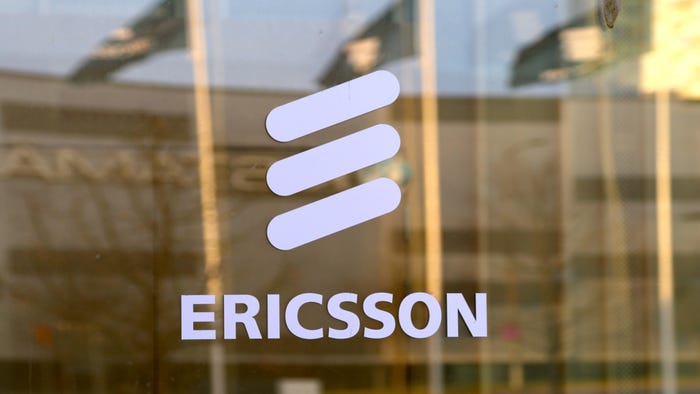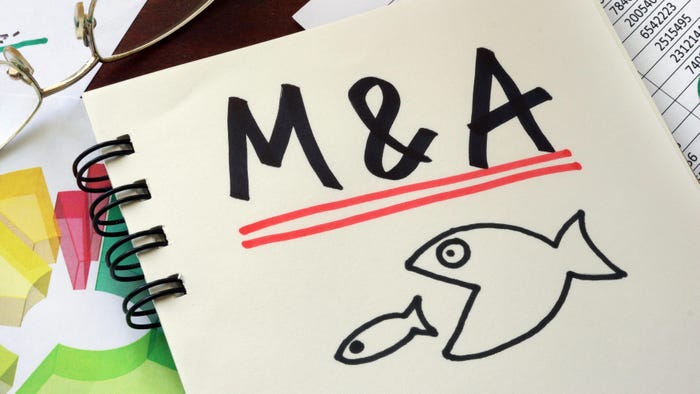Phone wars – a new hopeless
A long time ago, in a galaxy far, far away – well, actually it was in this galaxy, and it was only ten years ago, but we have to allow for a certain poetic licence – a princess was lying on the beach of a remote tropical island, dismayed that she was unable to get any reception on her StarTac cell phone.
September 12, 2008
By The Informer
A long time ago, in a galaxy far, far away – well, actually it was in this galaxy, and it was only ten years ago, but we have to allow for a certain poetic licence – a princess was lying on the beach of a remote tropical island, dismayed that she was unable to get any reception on her StarTac cell phone.
Unfortunately, for the princess, she wasn’t married to a prince, but fortunately she was married to a senior executive at Motorola. “Hmm, StarTac,” he might well have mused to himself, “that gives me one hell of a bright idea!” And so began the US firm’s ill-advised foray into the world of satellite communications.
Iridium was born on November 1st 1998 and had filed for Chapter 11 bankruptcy protection a mere nine months later. It wasn’t until June of this year that Moto finally escaped the creditors, which had been chasing it since 2001, when Iridium Satellite was launched by private investors who had paid $25m for a firm that had cost investors an estimated $6bn.
It was also back in those heady days of 1998, when anything seemed possible, that two Stanford University PhD students – Larry Page and Sergey Brin – incorporated what would in time become one of the world’s biggest brands: Google.
Fast-forward ten years and the humble search engine employs about 14,000 people and turns over in excess of $10bn annually. With that kind of lolly Google could launch an Iridium every year if it so desired.
Maybe that’s why this week it emerged that the firm is sinking cash into satellite operator O3b to bring “high speed, low cost” internet connectivity not to tropical beach dwelling princesses but to emerging markets.
O3b stands for “the other three billion” and is presumably a reference to the three billion unconnected human beings roaming the planet and not the $3bn more its investors might be asked to cough up later in order to launch the service. It’s the brainchild of American entrepreneur Greg Wyler, who has been rolling out fibre networks in Rwanda with his company Terracom.
The plan is to launch an initial constellation of 16 satellites, which is significantly less than Iridium’s 66. (Incidentally, the Iridium project had originally intended to launch 77 satellites, since 77 is the atomic number of elemental Iridium. As a result, Motorola’s money sink satellite phone system should probably have been renamed dysprosium, since it has an atomic number of 66. Boffins take note that sulphur is the element that has an atomic number of 16).
The O3b satellites are to be supported by an infrastructure of 2,300 transponders, supplying internet backhaul based on 3G cellular and WiMAX at speeds reaching 10Gbps. Production of the satellites has begun and service activation is scheduled for late 2010.
It sounds like it’s going to cost an astronomical sum of money to launch a service targeted at emerging markets – where conventional wisdom suggests keeping costs down is a definite bonus – still if anyone call pull it off, it’ll be Google.
Keeping one foot planted firmly in the realm of far away, futuristic and ludicrously expensive networks, US communications regulator, the FCC, is to take another crack at auctioning off the so called ‘D block’ of 700MHz spectrum.
No one wanted it for the reserve price of $1.3bn earlier in the year, so FCC chairman Kevin Martin has suggested the spectrum be split asunder. One half of the spectrum will be available as a single national licence, with a minimum reserve price of $750m, which will allow the licensee to offer commercial services, but still with the previous requirement that it must share the spectrum with public safety organisations; and a second auction comprising 58 separate regional licences. But here’s where it gets confusing. Should the national licence bid fail to meet the reserve price, the D block auction would turn into a straight scrap between LTE and WiMAX. Whichever technology proponents – LTE or WiMAX – raise most money or cover more of the population, this has to be the technology used by all the other D block users. The FCC would then re-auction the spectrum secured by the ‘losing’ technology and invite new bids for the ‘winning’ technology as a replacement. Got that?
It seems like one potential outcome in this eventuality would be great news for Alcatel Lucent and Motorola. During the three months ended 30th June 2008, the two vendors accounted for over two thirds of worldwide mobile WiMAX equipment revenue according to Infonetics Research.
The two suppliers have been described as “runaway leaders” in the 802.16e equipment market. According to the analyst, worldwide fixed and mobile WiMAX equipment revenue topped $402m in the second quarter, up three per cent from the previous quarter.
It’s a lot of money, but the mobile WiMAX industry is still in its infancy. Being the runaway leader of a race that has only just begun is good, but the race is far from won – in the words of tedious sports pundits the world over, this is a marathon and not a sprint.
Speaking of Sprint, the CFO of the US carrier’s WiMAX partner Clearwire has stated that the firms are on track to gain regulatory approval despite AT&T kicking up a stink earlier in the year suggesting that the Sprint/Clearwire proposal had, “failed to address in any meaningful way the competitive showing traditionally required by the FCC when reviewing major transactions. Because the applications are therefore facially defective, they should be denied.”
Clearwire CFO John Butler reportedly told an investor conference that attempts to gain regulatory approval for the deal had gone smoothly so far, with the exception of an objection filed by AT&T. “So there. Ner, ner, n-ner, ner!” he might well have thought to himself.
Why can’t they all just get along like the guys and gals over at the Symbian Foundation? It has announced a gaggle of new members. On Tuesday this week, Acrodea, Brycen, HI Corporation, Ixonos, KTF, Opera Software, Sharp, TapRoot Systems and UIQ Technology all added their endorsement to the organisation.
To date, 40 companies have confirmed commitment to the initiative, including the ten initial board members: AT&T, LG Electronics, Motorola, Nokia, NTT DoCoMo, Samsung Electronics, Sony Ericsson, STMicroelectronics, Texas Instruments and Vodafone.
If you can’t join the Symbian Foundation love in, but you’re still desirous of the warm glow of friendly brotherhood and banter, maybe you should sign up to Facebook. You could stay in-touch by using Vodafone Connect to Friends. It’s a Facebook plugin that enables users to send text and picture messages from their PC or laptop to anyone, even non-Facebook users. The smart thing is, it’s also accessible to any user, even those not on the Vodafone network.
It’s not free though, which could end up putting off spendthrift social networkers. The cost of sending text and picture messages via the app is £0.10 per text and £0.30 per picture message, but it does also work overseas.
The Vodafone Executive Group on Facebook has been busy updating this week. Michel Combes will join Vodafone as CEO of the Europe Region unit. Paul Donovan, current CEO of the EMAPA region, is leaving Vodafone at the end of this year. The EMAPA regional unit will be split into two divisions – Central Europe/Africa and Asia-Pacific. Two new regional CEOs will be announced in due course. Terry Kramer will step up to become the group Strategy and Business Improvement director. While head honcho Vittorio Colao wants to challenge Arun Sarin to a game of Wordscraper.
Meanwhile, General Motors Europe CFO Luca Maestri joined the Nokia Siemens Networks Group this week after being announced as the incoming chief financial officer for the vendor. Incumbent CFO Eric Simonsen will be looking forward to a bit of golf and maybe time to work on his own Facebook profile as he prepares to retire at the end of the year.
If all this talk of Facebook is getting you in the mood for a poke. You can always hunt out the Informer because he’s finally joined the world of Web 2.0 and set up a profile.
Meanwhile, rival social network MySpace has teamed up with smartphone vendor Research In Motion to integrate the former’s main social networking components with the latter’s Blackberry platform. Not only that but Blackberry users will be able to use Microsoft Live Search as their search engine of choice within the Blackberry Browser as well as access Live Search on Mobile.BlackBerry.com.
And, in further evidence that RIM is getting down with the kids, the Ottawa OEM has unveiled its first ever clamshell device. The Blackberry Pearl Flip 8220 smartphone packs all the expected Blackberry gadgetry into the ‘popular’ clamshell form factor, just as we were thinking sliders and touch screens were all the rage. Still, better late than never, eh?
RIMs slow and steady move into the consumer space is being matched by Nokia’s relentless march into the enterprise space. The Espoo giant has announced plans to extend Microsoft Exchange ActiveSync to all of its S60 3rd Edition devices.
A total of 43 Nokia gadgets will now support the Mail for Exchange mobile email application, with future releases of the E and N series platforms featuring the app preinstalled.
According to the Finnish firm’s own figures to the end of July, this means around 80 million mobile phone owners worldwide will now be able to connect to an Exchange Server. By comparison, Research In Motion’s (RIMs) total BlackBerry subscriber based reached 16 million at the end of May.
It’s not really a fair comparison, given that not all of Nokia’s devices will be used for any kind of email, never mind corporate email, whereas the majority of RIM’s probably are. But one thing is clear, Nokia’s move this week is a clear attack on RIM’s market share in the enterprise space. Though, the Finnish powerhouse admitted this week that it may lose market share during the third quarter in the face of the aggressive pricing policies of its rivals.
The vendor contends its strategy is only to take share when it is profitable for it to do so, and while Samsung and LG are becoming very aggressive in the emerging markets, Nokia is electing not to respond.
On the services side of the fence Apple and Microsoft were both active this week. Apple unveiled the latest batch of iPhone and iPod updates at a bash in San Francisco. So far App Store visitors have downloaded more than 100 million applications since the store’s launch on July 11th.
Microsoft, meanwhile, has announced that Zune users will be able to tag songs they hear over the device’s FM radio for later purchase.
The Informer imagines Steve Jobs will be quaking in his black roll-neck when hears of the Redmond Giant’s latest MP3 player development.
It’s unlikely, though, that Jobs will be quaking quite as much as former Verizon technician Joseph Vaccarelli. Who was charged this week with tapping into the land lines of nearly 950 customers in order to spend 45,000 minutes chatting on smut calls.
Some people just don’t take their job seriously.
Until next time,
The Informer
Read more about:
DiscussionYou May Also Like









_1.jpg?width=700&auto=webp&quality=80&disable=upscale)


.png?width=800&auto=webp&quality=80&disable=upscale)